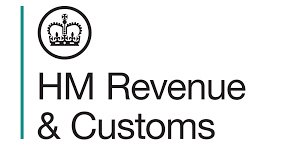HMRC SDLT: Grant of Lease Example: SDLT Changes for Scottish Land Transactions
SDLTM18235 – Notification: Grant of a lease: Example 4a
This page provides information on the changes in tax regulations for land transactions in Scotland. Since April 2015, Stamp Duty Land Tax (SDLT) is no longer applicable to these transactions, as they are now subject to the Land and Buildings Transaction Tax (LBTT).
- Page archived due to tax regulation changes.
- SDLT no longer applies to Scottish land transactions.
- Land and Buildings Transaction Tax (LBTT) is now applicable.
- Change effective from April 2015.
“`

Read the original guidance here:
HMRC SDLT: Grant of Lease Example: SDLT Changes for Scottish Land Transactions
Understanding Stamp Duty Land Tax (SDLT)
Stamp Duty Land Tax (SDLT) is a tax paid when you buy property or land over a certain price in England, Wales, and Northern Ireland.
When SDLT Applies
You must pay SDLT when you:
– Buy a freehold property
– Purchase a leasehold property
– Buy shares in a company that owns property
Calculating SDLT
The amount of SDLT you pay depends on the property price and the rate applicable at the time of the purchase. Here are the key points to remember:
– SDLT is charged on the portion of the property price that exceeds a specific threshold.
– The current threshold is £125,000 for residential properties. For first-time buyers, a different threshold may apply.
– Different rates apply depending on whether the property is residential or non-residential.
Residential Properties SDLT Rates
For residential properties, SDLT is tiered, which means you only pay the higher rates on the part of the purchase price that falls within each band. Here are the current rates:
– Up to £125,000: 0%
– £125,001 to £250,000: 2%
– £250,001 to £925,000: 5%
– £925,001 to £1.5 million: 10%
– Above £1.5 million: 12%
For example, if you buy a house for £300,000, you would pay:
– 0% on the first £125,000 = £0
– 2% on the next £125,000 (£125,001 to £250,000) = £2,500
– 5% on the remaining £50,000 (£250,001 to £300,000) = £2,500
Total SDLT owed would be £0 + £2,500 + £2,500 = £5,000.
First-Time Buyers Relief
First-time buyers may be eligible for relief, which increases the SDLT threshold to £300,000. If the property’s price does not exceed this amount, no SDLT is owed. If the purchase price is between £300,001 and £500,000, the relief applies only up to £300,000.
Example:
If a first-time buyer purchases a house for £350,000, they will owe SDLT on £50,000 (the price over £300,000):
– No tax on first £300,000 = £0
– 5% on remaining £50,000 = £2,500
– Total SDLT = £2,500
Additional Property Purchases
If you buy an additional property, you may have to pay a higher rate of SDLT. This applies if:
– You already own a home and buy another.
– You are buying a buy-to-let property.
The additional rates are:
– An extra 3% on top of the standard SDLT rates for properties costing more than £40,000.
Example:
If you buy an additional residential property for £400,000, here’s how the calculation would look:
– Up to £125,000: 0%
– £125,001 to £250,000: 2% = £2,500
– £250,001 to £400,000: 5% = £7,500
– Total before the additional charge = £0 + £2,500 + £7,500 = £10,000
– Add additional 3% on the whole amount: £400,000 x 3% = £12,000
– Total SDLT owed = £10,000 + £12,000 = £22,000
Reliefs and Exemptions
There are various circumstances under which SDLT may be reduced or exempt. Some of these include:
– Transfer of property between spouses or civil partners.
– Certain types of property, such as charities, may be exempt from SDLT.
Each relief has its own specific conditions that must be met.
Relief for Charity Purchases
Charitable organisations may be eligible for relief when purchasing property. This generally applies to properties used for charitable purposes. In these cases, organisations need to provide formal evidence of their charitable status when making a purchase to benefit from the relief.
Registering and Paying SDLT
Once you complete a property transaction subject to SDLT, you must submit an SDLT return, even if no SDLT is owed. Here are the key steps:
1. Submit the SDLT return electronically within 14 days of the completion date.
2. Pay any SDLT due by the same deadline.
3. Use the online services provided by HMRC to fill out the SDLT return and make payment.
Each transaction requires separate submissions.
Dealing with Mistakes
If you realise that you’ve made a mistake on your SDLT return, you can make adjustments. Here’s how:
– Call HMRC to discuss the mistake if it happens shortly after the return.
– If more time has passed, you may need to submit a formal claim for repayment if you’ve overpaid.
Each of these processes demands specific evidence and forms, so ensure to gather all related documentation.
Example of Tenant Lease Notification
One key scenario that SDLT applies to involves the granting of leases. It requires a different process than buying a freehold property.
Suppose you are granted a lease for a property that costs £200,000:
– First, you must notify HMRC about the lease.
– You can find guidance on notifying HMRC using code SDLTM18235, which provides detailed steps on how to handle the notification of granting a lease.
Important terms to consider include:
– Uncollected rent: This is rent not collected by the landlord at the time of lease grant.
– The effective date: This is when the actual lease begins and it’s crucial for determining your SDLT liability.
Another example could include a scenario where the property is leased for longer than a set period, impacting the SDLT due.
Changes in SDLT Law
It’s important to stay updated on changes in SDLT law. Occasionally, updates or changes in policies may come into effect.
Be alert for announcements from HMRC regarding:
– Changes in SDLT rates.
– Adjustments in thresholds for different categories of properties.
Always ensure you check that you are using the most current information to calculate your dues.
What Happens if You Do Not Pay SDLT?
Failing to pay your SDLT on time can result in penalties and interest charges. Consider the following:
– HMRC can impose a late payment penalty if you do not pay the SDLT owed by the deadline.
– Interest will accrue on any unpaid amounts until they are settled.
You can face more severe consequences, such as legal action or difficulties in selling the property if you do not comply with SDLT obligations.
Each case can vary, so it’s wise to seek advice from a professional if you find yourself in difficulty.
Final Notes on SDLT
When purchasing property in the UK, understanding SDLT is essential. Familiarise yourself with the rates, reliefs, and responsibilities associated with this tax.
Keep track of your payment and ensure all documentation is submitted promptly to avoid any complications. Whether it’s a first home, an investment property, or a lease agreement, being informed will help you navigate the complexities of buying property effectively.







